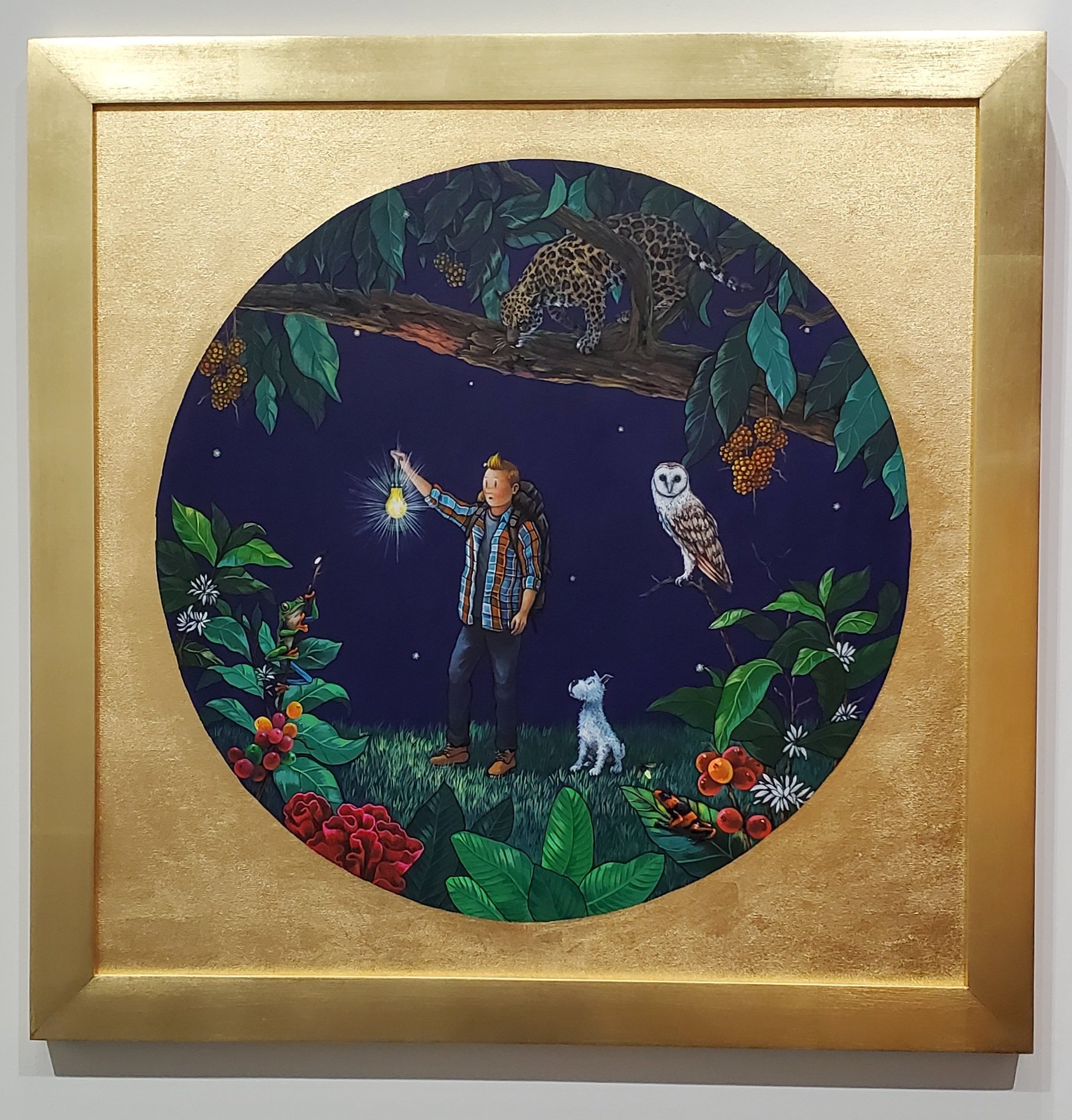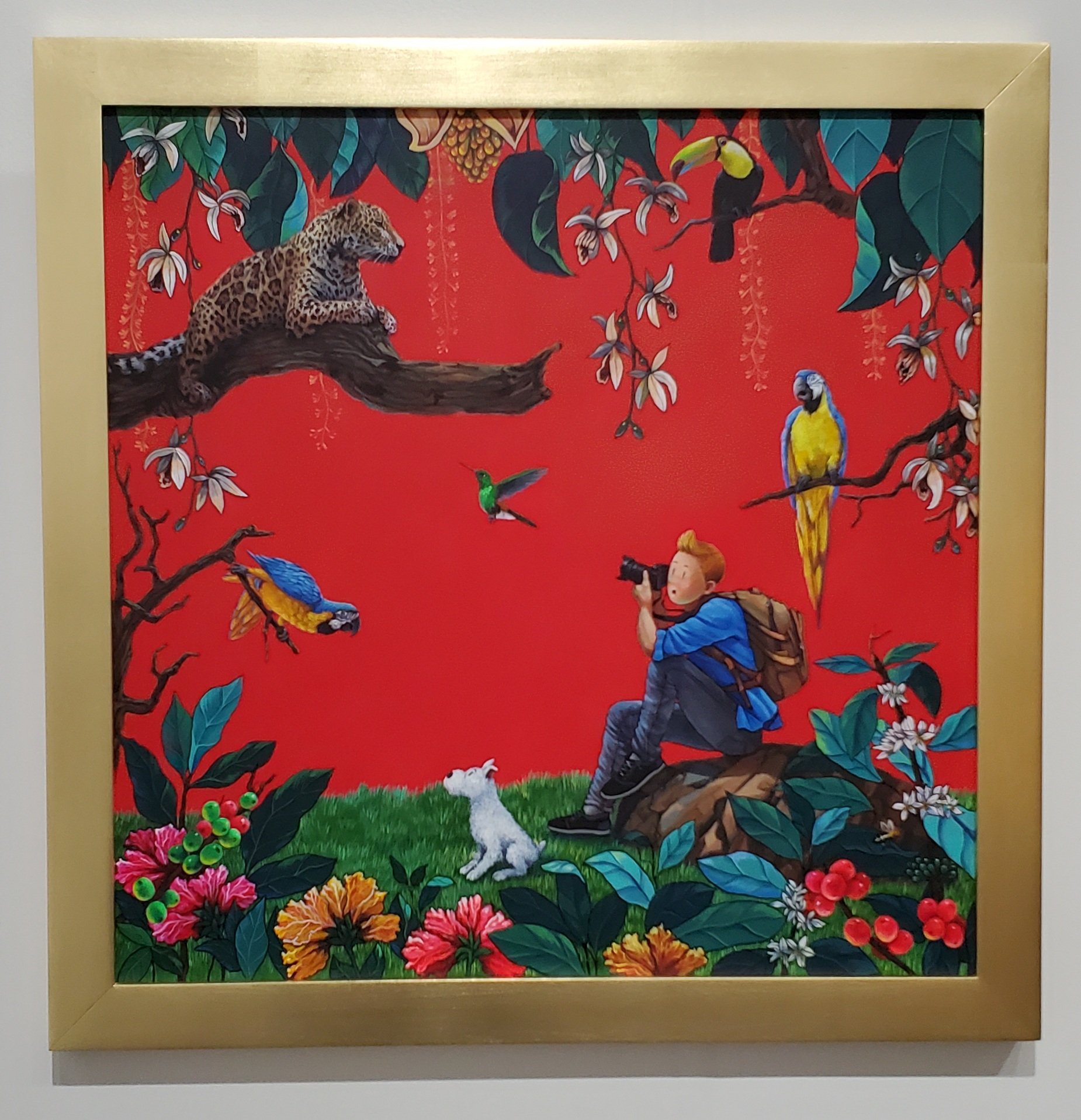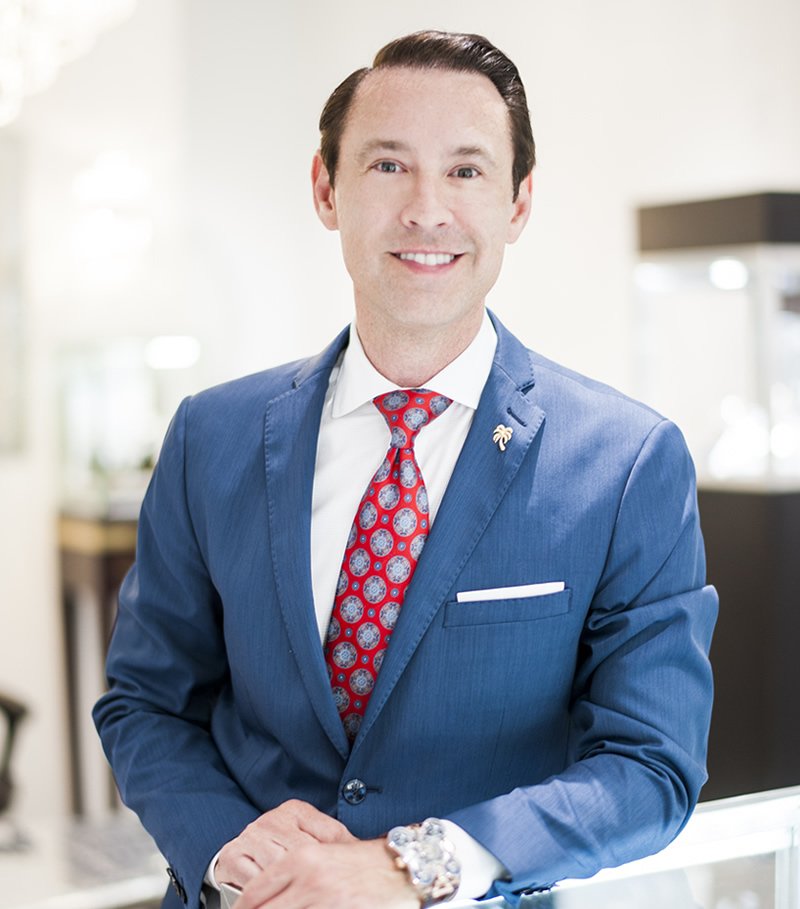Global vs. Local: The Art Palm Beach Show Poised to Make a Move Ahead of the Pack
“Art as Palm Beach has never been privileged to see,” declared the invitation to the 1919 Palm Beach Vernissage – a centenarian predecessor of the art show today. Back then, it was an exclusive affair, strictly for those privileged few. But it set in motion an irreversible process; it brought the art of the new world to the restrictive island.
Art Palm Beach entrance. Image: Irina Rothenberg.
The works by Middleton Manigault, John Singer Sargent, Max Kuehne, and Robert Winthrop Chanler, exhibited at the Vernissage, might have been viewed as scandalous, even perverse. Still, chic art galleries followed and offered modern alternatives to the tired academic style of Old Masters and decorative arts and crafts. As a result, art salons and vernissages became regular pastimes for the tastemakers of the period. In a word, the quaint leisurely resort town began transforming itself into a cultural hub of the American southeast.
Follow the money, they say. These days, with over 24% of the world’s wealthiest families having their winter homes in Palm Beach, the area enjoys the highest per capita number of arts and cultural institutions of any town in the United States. A happy fact from which young and old, rich and poor alike, fully benefit. But art collecting is still viewed as the perquisite of those more fortunate among us. With the town’s advantageous population statistics, it stands to reason that Art Palm Beach has enjoyed a long and successful run thus far.
If you look at the number of visitors or exhibiting galleries, the scale of Art Palm Beach is not on par with Art Basel Miami or TEFAF New York. Still, it has built itself into a reputable platform for emerging and established artists and consistently attracts quality galleries worldwide. Touted by its producers as the oldest running fair in the area means, it counts a mere 25 winters as its age. (Everything in seasonal South Florida is measured by winters.) Compared to La Biennale di Venezia, it is a toddler. But then again, some of the most well-established fairs in the world, like Frieze London and Miami Art Basel, just celebrated their 30th and 20th year, respectively. That is just how things are in the Contemporary art world – they are gauged in the Now.
Waterhouse & Dodd dedicated solo booths to a special sample of artworks by Albert Willem and Duncan McCormick.
This year, Art Palm Beach (25-29 January 2023) experienced a revival under new ownership. The controlling stake was acquired by the firm which produces the high-profile LA Art Show. In light of this, a much-promoted longest-running delimiter is important. For collectors, the fair is not the new kid on the block but the familiar long-standing mecca for art aficionados – only presumably better, bigger, broader, and bolder.
Yet the art fair calendar is already jam-packed on both sides of the globe. According to the UBS / Art Basel 2022 Survey, there are currently 340 art fairs staged worldwide. While the number dropped after the Pandemic2, it still makes it difficult for a fair-tigued collector to choose which ones to attend. For instance, consider the quandary presented by Frieze London and Paris Plus taking place merely two weeks apart. Not to mention the ever-on-our-minds concern (if not guilt) over excess carbon footprinting, worsened by all the transportation needed for attendees and participants. Still, the collectors are what it’s all about. So the question is: how does one art show stand out from the rest?
I turned to Kiersten Miller, the PR spokesperson for the event, for commentary. “The LA Art Show is coming to Palm Beach, [they are] bringing over 80 prestigious galleries; some of these galleries and pieces have never exhibited in Palm Beach before.” Sounds familiar? Just like 100 years ago! And it does feel as though we are on the precipice of a major shift again. Imagine Art Palm Beach attracting roughly as many visitors as its LA sibling, namely 70,000. Now compare this number to that of Miami Art Basel, which welcomed 76,000 visitors to its 20th edition in 2022. Of course, foot traffic is only one way to measure the success of a given art event, but the exciting potential of the show makes it worth keeping an eye on Art Palm Beach.
The fair’s website states that it is positioned to feature some of the “most prestigious contemporary, emerging and modern art galleries”. In truth, the global powerhouse names one might have hoped to see were not in attendance. But the new management is a driven bunch, and this is the reborn fair’s first iteration. If the visitor numbers continue to come close to last year’s count of approximately 35,000, the big-name galleries will inevitably follow.
Scott Diament. Courtesy Palm Beach Show Group.
For the last ten years, it was Scott Diament who turned the LA Art Show into the prestigious event it is today. His company manages several other premium art and design shows across the US. Scott himself is a Palm Beacher and a very well-known business figure in the area. On the opening night of the show, he was the very person to tell me about his vision for Art Palm Beach, albeit in a rapid-fire manner.
“We are changing three things. We are upping the level of the show by working with institutional collectors and bringing on non-profit organisations. We are re-introducing the show element into the art fair – more theatre, more colour. And we are, for the very first time, partnering with an amazing charity, St. Jude Children's Research Hospital, donating a percentage of all ticket proceeds to the fight against childhood cancer.” So there you have it - it doesn’t have to be an entirely new venture, just an uplifted version of what already worked well. A good leader knows when not to “fix” things.
Marco Lutyens, Particles, 2023. Installation part of DIVERSEartPB, curated by Marisa Caichiolo.
However, if you want to be taken seriously, you need to adopt serious topics. Enter Marisa Caichiolo, a multidisciplinary artist and curator. With her powerful voice and creative guidance, the show received a hefty curatorial boost. Her brainchild DIVERSEartPB, a unique addition to the programming, brings together museums, art institutions and non-profit organisations to create a dialogue on salient global issues. Appropriately, this first year’s theme was Climate Change. Interactive installations, immersive video sections, and guest-scientist talks were threaded throughout the fair to constantly remind us of our impact on the planet’s wellbeing. Art, perhaps more than any other medium, has the potential to change human beings’ ways.
Walking through the spacious, well-laid-out halls of Art Palm Beach, I saw galleries not just from New York, Miami and California but also from the UK, UAE, France, Germany, and Colombia, amongst others. Many, like Yann Bombard of K+Y Contemporary Art from Paris and Emily Campin of Gladwell & Patterson from London, stayed in Florida after exhibiting in Miami during Art Basel. And the decision was a savvy one.
Evan Lurie Gallery. Michael Gorman, Beacon of Freedom, 2012. Mixed media with resin 183 x 152cm. Image: Irina Rothenberg.
Participating in two shows within six weeks and sharing in the collecting clientele base of the entire Florida southeast coast (Miami to Palm Beach), exhibitors may nearly double their exposure to the affluent audiences. Of course, it is possible that the beaches and balmy 25-degree weather in Florida have something to do with it... Be that as it may, many gallery representatives I spoke to were very pleased with their decision to participate.
Praising the overall organisation of the show, (Rodney Kazemi of Connect Contemporary from Atlanta, GA), they also shared with me that the fresh new look of the fair was more in line with the Contemporaries on the continent. Those at Tagliatella gallery from Toronto, Canada, who offer artworks by the likes of Roy Lichtenstein, Alex Katz, and Julian Opie, told me that collectors they come in contact with at the show are invariably quite knowledgeable and sophisticated. Nice! It certainly makes their job easier – several pieces have already been sold.
The visitors I spoke with were all in favour of the more spacious and uncluttered booths, enabling them to take the artwork in without feeling overwhelmed. Uncharacteristically for an art fair, this one was indeed very visitor-friendly. Clear wall labels, often with a price (gasp!), good lighting and chatty booth representatives. One could find a personal treasure like a ceramic Lego sculpture by Kimi Kim Wittling for $4,000 or an early Egon Schiele drawing for $340,000. To make things even less stressful for a buyer, Art Palm Beach partnered with Artsy.net to aid in the selling process during and after the show. Those of us who can’t quite commit on the spot are able to acquire the work later. But with over 3 million Artsy visitors from 190 countries annually, one should better hurry up and acquire that coveted piece.
Gallery Elim. Kimi Kim Wittling, Lego 8 pcs Polka Dot, 2019. Ceramic, 50 x 50cm (depending on assembly). Image: Irina Rothenberg.
With the marketing emphasis on LA coming to Palm Beach, there is a definite push towards the globalisation of the fair. And the owners know precisely what they are doing. Stars and economic conditions align to put our sleepy Palm Beach onto the art map of the world. Before Donald Trump’s presidency, if people outside the US had no idea where Palm Beach was, he took care of putting the island in the conversation in a “huge” way. Now with LA’s blockbuster tactics, there is no way back – our exclusive, quietly posh resort town is gaining an international spotlight and going global. As a local, I have my reservations: who wants heavier traffic, higher prices, and the only available table at your favourite restaurant at 5pm? But looking at it from a business point of view, I totally get it. In this highly competitive art fair universe, one must go big or go home. Let’s go big!
Irina Rothenberg
Contributing Writer, MADE IN BED









